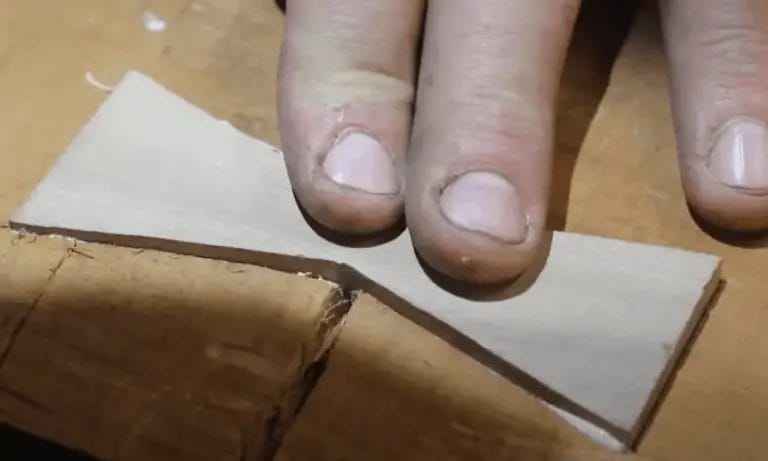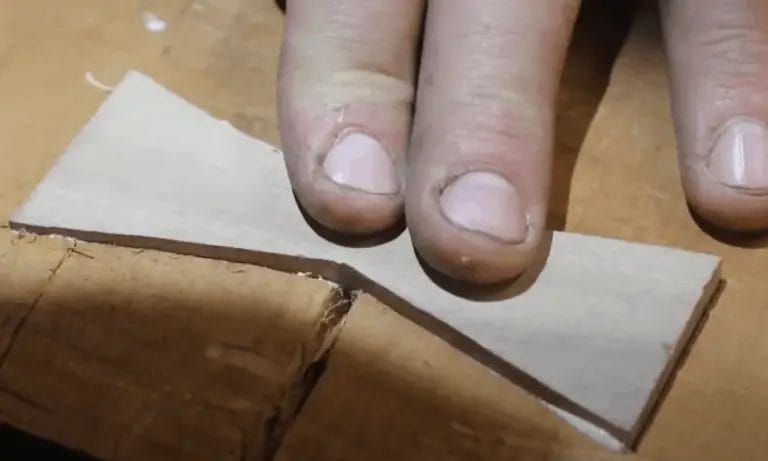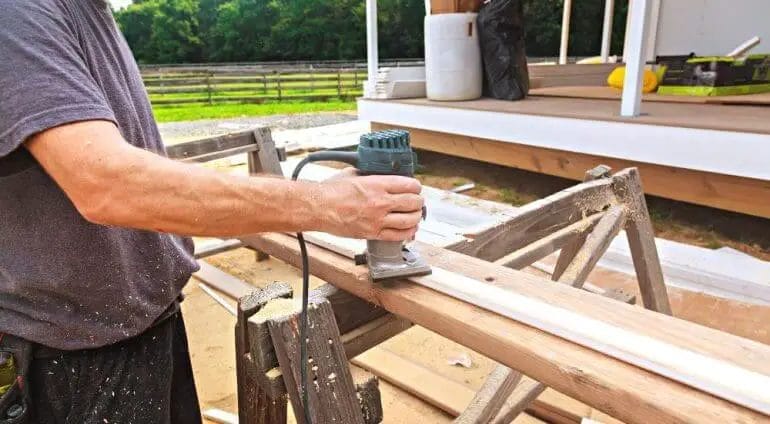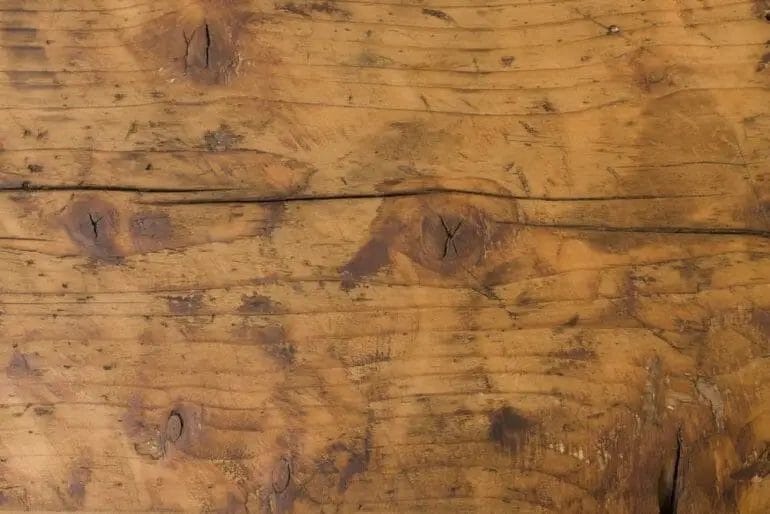If you’ve noticed a crack in your wooden furniture or flooring, it’s important to take immediate action to prevent it from spreading further. Ignoring the crack can lead to more extensive damage and potentially costly repairs. Luckily, there are effective methods to stop a crack in wood from spreading, allowing you to maintain the integrity and aesthetics of your wooden surfaces. From using wood filler to applying reinforcement techniques, read on to discover simple yet effective ways to address and stop the spread of cracks in wood.
One of the most common methods to stop a crack in wood from spreading is by using wood filler. Wood filler is a pliable substance that can be easily molded into the crack, filling in gaps and providing structural support to prevent further splitting. After applying the filler, it can be sanded down and painted or stained to match the surrounding wood, creating a seamless repair.

In addition to using wood filler, another effective technique to stop a crack in wood from spreading is by reinforcing it with dowels or screws. By drilling holes on either side of the crack and inserting dowels or screws, you can create additional stability and strength, preventing the crack from widening. This method is especially effective for larger cracks or those in load-bearing structures.
Another option to consider when trying to stop a crack in wood from spreading is using epoxy resin. Epoxy resin is a versatile and durable material that can be poured into the crack, effectively sealing it and preventing further

Understanding the Causes: Identifying the Factors that Lead to Cracks in Wood and How to Prevent Them
Wood is a versatile and widely used material that adds warmth and beauty to any space. However, one common issue that woodworkers and homeowners face is the occurrence of cracks in wood. Cracks can not only affect the aesthetics of the wood but also weaken its structural integrity. In this section, we will explore the various factors that lead to cracks in wood and discuss effective preventive measures.
1. Moisture Content:
One of the primary causes of cracks in wood is changes in moisture content. Wood is an organic material that expands and contracts in response to changes in humidity levels. When the moisture content of wood increases, it tends to expand, and when it decreases, it contracts. These fluctuations can result in stress build-up within the wood, leading to cracks.
To prevent cracks caused by moisture content, it is essential to ensure that the wood is properly seasoned or dried before use. This allows the wood to reach equilibrium with the surrounding environment, minimizing the risk of excessive swelling or shrinkage.
2. Temperature Changes:
Another factor that can contribute to cracks in wood is sudden or extreme temperature changes. When wood is exposed to rapid temperature fluctuations, it can cause uneven expansion or contraction, leading to stress and ultimately cracks. This is particularly common in exterior applications or areas with temperature variations.
To prevent cracks caused by temperature changes, it is important to acclimate the wood to its intended environment before installation. This allows the wood to adjust gradually to the temperature and reduces the risk of sudden stress-induced cracking.
3. Incorrect Cutting or Joinery Techniques:
The way wood is cut and joined together can also influence its susceptibility to cracking. Improper cutting or joinery techniques can create weak points in the wood, making it more prone to cracks. This is especially true for certain wood species with inherent weaknesses, such as oak or maple.
To mitigate the risk of cracks caused by incorrect cutting or joinery techniques, it is crucial to use proper tools and techniques when working with wood. This includes using sharp saw blades, ensuring accurate measurements, and employing appropriate joinery methods.
4. External Forces and Impact:
External forces and impact can also cause cracks in wood. This can include heavy objects being dropped on the wood, excessive pressure or load-bearing, or accidental impacts. These forces can cause the wood to fracture, resulting in cracks.
To prevent cracks caused by external forces and impact, it is important to handle and use wood with care. Avoid dropping heavy objects on wood surfaces and take precautions to distribute weight evenly when placing loads on wood structures.
5. Lack of Proper Maintenance:
Lastly, a lack of proper maintenance can also contribute to the development of cracks in wood. Exposure to harsh weather conditions, UV rays, and moisture over time can deteriorate the wood’s surface, making it more susceptible to cracking.
To prevent cracks due to a lack of maintenance, it is essential to regularly inspect and clean wood surfaces. Applying protective finishes, such as sealants or coatings, can also help minimize moisture absorption and protect the wood from environmental damage.
In Summary
Cracks in wood can be a common and frustrating issue. Understanding the causes behind these cracks is crucial for effectively preventing them. Factors such as moisture content, temperature changes, incorrect cutting or joinery techniques, external forces, and lack of proper maintenance can all contribute to the development of cracks in wood. By taking appropriate preventive measures, such as properly drying and acclimating the wood, using correct cutting and joinery techniques, handling wood with care, and regularly maintaining wood surfaces, the risk of cracks can be significantly reduced, preserving the beauty and structural integrity of wooden materials.

Repair Techniques: Proven Methods to Fix and Stop the Spread of Cracks in Wood
Wood is a natural material that adds warmth and beauty to our homes. However, over time, wood can develop cracks due to various factors such as changes in humidity, age, or even physical impact. These cracks not only affect the aesthetic appeal of the wood but can also weaken its structure if left untreated.
Fortunately, there are several proven techniques to repair and stop the spread of cracks in wood. By following these methods, you can restore the integrity of the wood and prolong its lifespan. Let’s explore some of these techniques in detail:
1. Filling with Wood Putty or Epoxy
Filling cracks with wood putty or epoxy is one of the most common and effective methods of repairing wood. Wood putty is a mixture of wood dust and a binding agent, while epoxy is a two-part adhesive. Both options can be easily applied to the cracks and provide a durable and seamless finish.
Here’s how to use wood putty or epoxy to repair cracks in wood:
- Start by cleaning the crack and removing any loose debris or dirt.
- If the crack is deep, use a chisel or utility knife to widen it slightly. This will create more surface area for the putty or epoxy to adhere to.
- Mix the wood putty or epoxy according to the manufacturer’s instructions.
- Using a putty knife or spatula, fill the crack with the putty or epoxy, ensuring that it is completely filled.
- Smooth out the surface of the putty or epoxy with a clean, damp cloth.
- Allow the putty or epoxy to dry and harden completely before sanding it down to achieve a smooth finish.
- Finally, apply a suitable wood finish or paint to match the surrounding wood.
2. Using Wood Splines
Wood splines are thin strips of wood that are inserted into the cracks to reinforce and stabilize them. This method is particularly effective for larger cracks or when dealing with structural issues. Here’s how to use wood splines to repair cracks:
- Clean the crack and remove any loose debris.
- Measure the length and width of the crack and cut a wood spline that fits snugly into the gap.
- Apply wood glue to the splines and insert them into the crack.
- Tap the splines gently with a mallet or hammer to ensure a tight fit.
- Remove any excess glue and let it dry according to the manufacturer’s instructions.
- Sand down any rough edges and apply a finish to match the surrounding wood.
3. Reinforcing with Wood Screws or Nails
If the crack is causing instability and needs additional reinforcement, using wood screws or nails can be a viable solution. This method is suitable for cracks that are relatively straight and accessible from both sides. Here’s how to reinforce cracks with wood screws or nails:
- Align the wood pieces on either side of the crack.
- Drill pilot holes slightly smaller than the diameter of the screws or nails at regular intervals along the crack.
- Insert the screws or nails into the pilot holes, ensuring a tight fit.
- Countersink the heads of the screws or nails slightly below the surface of the wood.
- Fill the holes with wood putty or epoxy and sand it down for a smooth finish.
- Apply a suitable finish to match the surrounding wood.
4. Preventive Measures
While repairing cracks in wood is essential, taking preventive measures can help minimize the occurrence of cracks in the first place. Here are some preventive tips:
- Ensure proper installation and construction techniques to minimize stress on the wood.
- Maintain consistent humidity levels to prevent excessive moisture or dryness.
- Apply a protective finish, such as varnish or paint, to shield the wood from environmental elements.
- Avoid placing heavy objects on delicate wooden surfaces to prevent unnecessary stress.
- Regularly inspect and maintain wooden structures to identify and address potential issues early on.
In summary, repairing cracks in wood is crucial for

Choosing the Right Products: Essential Tools and Materials for Repairing and Preventing Wood Cracks
Wood is a versatile and beautiful material used in various applications, such as furniture, flooring, and construction. However, one common issue that woodworkers and homeowners face is the occurrence of cracks in wood. These cracks can compromise the integrity and aesthetics of the wood, but with the right tools and materials, they can be easily repaired and prevented. In this section, we will discuss the essential tools and materials needed to effectively repair and prevent wood cracks.1. Wood Filler
Wood filler is a must-have product for repairing cracks in wood. It is a pliable substance that fills in gaps, cracks, and holes in the wood. Wood fillers come in various formulations, such as water-based or solvent-based. It is important to choose a wood filler that matches the color of the wood to achieve a seamless repair. Additionally, opt for a high-quality wood filler that is durable and resistant to shrinking or cracking over time.2. Sandpaper
Sandpaper is an essential tool for repairing wood cracks. It is used to smooth the surface of the wood and remove any rough edges or imperfections. When repairing cracks, start with a coarse-grit sandpaper to remove any splinters or protruding wood fibers. Gradually progress to finer-grit sandpapers to achieve a smooth and even surface. This will ensure that the repaired area blends seamlessly with the surrounding wood.3. Wood Glue
Wood glue is a vital component for repairing wood cracks. It is used to bond and strengthen the wood fibers, ensuring a durable repair. When choosing a wood glue, opt for a high-strength adhesive that is specifically designed for woodworking applications. Apply the glue to the cracked area, press the wood together, and clamp it until the glue dries. This will create a strong bond and prevent further cracking or separation.4. Moisture Meter
A moisture meter is an essential tool for preventing wood cracks. Wood is susceptible to changes in moisture content, which can lead to cracking. A moisture meter allows you to measure the moisture levels in the wood, helping you determine if it is suitable for your project. By ensuring that the wood has the optimum moisture content, you can minimize the risk of cracks forming due to excessive drying or expansion.5. Wood Sealant
Wood sealant is a protective coating that helps prevent moisture penetration and wood cracking. It creates a barrier between the wood and external factors such as humidity, temperature changes, and UV rays. Choose a high-quality wood sealant that is suitable for your specific application, whether it is indoor or outdoor use. Applying a sealant to the wood surface will help maintain its integrity and prevent cracks from forming.6. Clamps
Clamps are essential tools for repairing wood cracks, especially when using wood glue. They provide the necessary pressure to hold the wood together while the glue sets, ensuring a strong and secure bond. When choosing clamps, consider their size and pressure capacity to accommodate the size and thickness of the wood being repaired. Having a variety of clamps in different sizes and types will allow you to handle a wide range of repair projects. In summary, choosing the right tools and materials is crucial for repairing and preventing wood cracks. Wood filler, sandpaper, wood glue, moisture meter, wood sealant, and clamps are essential items that should be part of any woodworker or homeowner’s toolkit. By using these products effectively, you can repair cracks in wood and prevent them from occurring in the first place, ensuring the longevity and beauty of your wood projects.Maintenance and Prevention: Best Practices to Keep Wood in Prime Condition and Stop Cracks from Spreading
Wood is a versatile and timeless material that adds warmth and character to any space. However, it requires regular maintenance to keep it in prime condition and prevent cracks from spreading. By following these best practices, you can ensure that your wood stays beautiful and sturdy for years to come.
1. Regular Cleaning
The first step in wood maintenance is regular cleaning. Dust and dirt can accumulate on the surface, which can lead to scratches and stains. To clean your wood, use a soft cloth or a microfiber duster to gently remove the dust. Avoid using abrasive cleaners or rough materials that can damage the wood’s surface.
2. Moisture Control
Wood is sensitive to changes in humidity, which can cause it to expand or contract. Excess moisture can lead to warping, while dry conditions can result in cracks. To prevent these issues, it’s important to maintain a stable humidity level in your home. Use a humidifier in dry climates and a dehumidifier in humid areas to keep the moisture level balanced.
3. Avoid Direct Sunlight
Direct sunlight can fade the color of your wood and cause it to dry out. To protect your wood from sun damage, use curtains, blinds, or UV-blocking window films to limit the exposure. You can also rearrange furniture periodically to prevent uneven fading.
4. Apply Protective Coatings
To provide an extra layer of protection, consider applying a protective coating to your wood. There are various options available, such as clear sealers, lacquers, or polyurethane finishes. These coatings can help prevent moisture penetration and reduce the risk of cracks.
5. Regular Inspections
Perform regular inspections of your wood to identify any signs of damage or cracks. Look for changes in color, texture, or any visible cracks. By catching these issues early on, you can address them promptly and prevent further damage.
6. Temperature Control
Extreme temperatures can also affect the condition of your wood. Avoid placing wood furniture or objects near heat sources, such as radiators or fireplaces, as the heat can cause the wood to dry out and crack. Similarly, avoid exposing wood to freezing temperatures, as this can lead to warping and damage.
7. Proper Handling and Moving
When handling or moving wood furniture or objects, it’s important to do so with care. Avoid dragging or dropping them, as this can cause cracks or dents. Instead, lift and carry them using proper techniques or use furniture glides and padding to protect the wood.
8. Regular Maintenance and Repair
Lastly, regular maintenance and timely repair are essential for keeping wood in prime condition. If you notice any cracks or damage, address them immediately. Fill small cracks with wood filler and apply touch-up finishes to restore the appearance. For larger or more severe damage, it’s best to consult a professional woodworker or furniture repair specialist.
Summary
Maintaining wood in prime condition and preventing cracks from spreading requires a combination of regular cleaning, moisture control, protection from sunlight, applying coatings, regular inspections, temperature control, proper handling, and timely maintenance and repair. By following these best practices, you can enjoy the beauty and durability of wood for generations to come.
FAQs
How can I stop a crack in wood from spreading?
To stop a crack in wood from spreading, you can use wood glue or epoxy resin to fill the crack. Apply the glue or resin into the crack and clamp the wood together until it dries. This will help prevent the crack from getting worse and stabilize the wood.
Can I repair a cracked wooden surface?
Yes, you can repair a cracked wooden surface. Fill the crack with wood filler, sand it down, and then apply a new coat of finish or paint. This will help restore the appearance of the surface and prevent further damage.
What can cause cracks in wood?
Cracks in wood can be caused by various factors such as changes in humidity and temperature, drying out of the wood, or excessive pressure or stress on the wood. It is important to properly maintain and care for wooden objects to prevent cracks from occurring.
Conclusion
In conclusion, preventing a crack in wood from spreading requires timely action and proper care. By identifying the crack early on, you can take measures to stabilize it and prevent further damage. Applying a wood filler or epoxy can help fill the crack and restore the structural integrity of the wood. Additionally, using clamps and supports can help immobilize the cracked area and prevent it from widening. Regular maintenance and inspection of wooden surfaces can also help detect cracks before they become larger and harder to fix. Remember, addressing cracks promptly is crucial to preserve the beauty and longevity of your wood furniture, floors, or other wooden items.